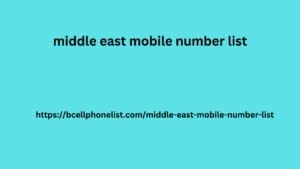If you have a company website, you have probably heard about the fearsome GDPR, which came into force in May 2018. Let’s find out together what the law says about privacy, cookies and processing of users’ personal data and how to adapt your site without too much stress.
If you are reading this page, it is because you are aware that all websites and apps must comply with certain obligations imposed by law, as well as comply with the requirements imposed by the GDPR (General Data Protection Regulation).
What does the law require?
In very summary, the points to be respected are:
1. Privacy Policy
Anyone who collects data about users (e.g. contact form, Google Analytics installation) must have it and no, using a standard document is not enough.
2. Cookie Policy
It describes the types of cookies installed through the company website, any third parties to which these cookies refer and the purposes of the processing.
3. Cookie Banner
It is the banner that must be shown on each user’s first visit to acquire consent to the installation of cookies.
4. Consent to data processing
If there are contact forms, service registration forms or newsletter subscription forms on the site, you must collect the free, specific and informed consent of the users (there must be a check-box for each type of treatment).
How can I make the site compliant?
When it comes to rules and laws, it is better not to pretend to be an expert in the matter. Fortunately, there are specialized companies that combine technical and legal skills.
Thus, a lead generation strategy begins to be outlined. Site visitors find content through search engines and can convert into leads by leaving their data (on landing pages, forms, etc.). Later, if they are considered interesting by marketing, they can be processed and converted into customers by sales.
If you want to learn more about how lead generation works, we have written a dedicated article.
Now let’s look at some tips and approaches to help you increase your customer base and convert more.
1) Increase the conversion of contacts into leads
Marketing does the work, but sales plays a key role. Salespeople need to inform marketing about the content that will attract the most qualified customers , and that should be highlighted on the website.
This is an important step that we have already discussed in the article dedicated to Smarketing . marketing-sales alignment.
Here are some tips:
Diversify your strategy to generate more leads.
Talk to your customers or prospects to see what type of content they would like to see on your site and in what formats ( video, infographics , or webinars ). Find out what topics in their industry they would like to see in-depth analysis. Pass this information on to your marketing team , who should be happy to know what content interests the qualified end user and is truly important to them.
Align with your social media team.
Attend industry events.
Attending events helps spread the word about your company in your industry. Potential customers who have met someone at your company may come to your website and contact you directly.
2) Increase the number of qualified leads
The marketing team is the one who selects and delivers qualified leads to sales. So they are the ones who need to find ways to increase the conversion rate . However, even here, a strong sales-marketing alignment can bring significant improvements consistently and without much effort.
Some ideas:
Create email marketing campaigns to “nurture” leads ( Lead Nurturing ).
Include Calls to Action ( CTA ) in your content.
All downloadable content should have CTAs – calls to action – for the user to learn more about your services and products.
Optimize your product/service pages.
If a user explores your website deeply, they will likely end up on some product/service pages. Make sure these pages contain clear information for those who may not know exactly what your company does. This can stimulate visitors to learn more.
If you want to learn more about how to create a lead conversion process , with suggestions for strategies and useful tools, we have a dedicated article on the subject!
3) From Lead to Opportunity
Then the lead comes along , requesting a demo, meeting, or more information that often takes too long to arrive or is even forgotten.
For outbound marketing campaigns, this data—which frequently includes both demographic and mobile contact information—is essential. You must maintain the accuracy of any data you use or handle from the Jamaica Mobile Database. Through middle east mobile number list mobile databases, marketing information about Jamaica Mobile Database is accessible for countries like Mexico, India, Brazil, Argentina, Australia, and Japan.
Develop a reminder system
After a meeting is confirmed, send a oman phone number material reminder email or text message the day before and an hour before. You will inevitably have gap meetings, but a reminder can reduce the number of people bw lists who forget.
Schedule meetings as early as possible.
The sooner you schedule your meeting, the better. This reduces the chance that the person will forget or lose interest, or even contact your competitor.
Try to offer multiple contact methods.
The more communication channels you have, the less likely you are to lose contact. Always try to have both the phone number and email of the potential customer.
Create an event or invitation from your calendar.
Using a tool like Google Calendar (or similar) to enter the appointment into a calendar is an additional step if you want to reduce the chances of forgetting.
4) Now close! Convert contacts into customers
At the moment of truth, finally, comes the most important question: to do it or not to do it?
Here are some closing tactics and techniques to help you “ bring it home .”
Keep your prices in line, and keep an eye on your competition
If you don’t consistently benchmark your pricing strategies against your competitors, you could be in trouble. Consumers today are more informed than ever, and they often deal with multiple suppliers, including your competitors.
Monitor your sales team.
Track the performance of your salespeople. If certain salespeople are consistently “ underperforming ,” invest in providing them with support or move them to other roles within the company where they might be more successful.
Communicate with the “decision makers” (final decision makers)
It is useful to talk to everyone, but make sure that the person you are negotiating with is able to approve the estimate and the project. You can also negotiate with those who do not have decision-making power, but in the end you must have the right person in front of you to close the deal: the “decision maker”.
Prepare a nice prospectus that highlights the ROI.
The cost of a very complex project can be a shock. Collect statistics from existing customers or do research in the sector, to see how much your project can earn your customer in the medium and long term.
Develop contracts with multiple options
If your offer consists of multiple activity packages, prepare an offer for each package , so that potential customers can also choose individual activities. Thus spreading the costs over time, and being clear about which services they get and at what cost. In this way, they will not feel discouraged from approving a contract that could be too large if purchased in bulk.
5) Conclusions
The activities to be carried out to increase contacts and convert them into leads, to increase qualified ones, transform them into opportunities and to close sales, are many and complex . They heavily involve the marketing and sales teams .


